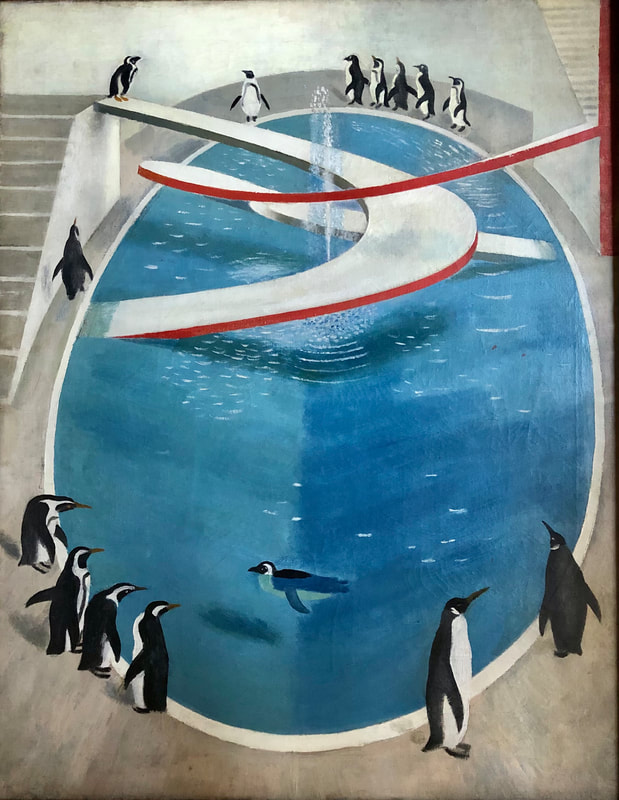|
Alfred Thomson RA 1894-1979 Penguin Pool c.1934 Oil on canvas 42 x 34 inches (106.6 x 83.3 cm) Signed and inscribed verso Alfred Thomson became a highly successful artist known for his subjects drawn from modern life, his chic portraits and, during the Second Word War, as the official artist attached to the Royal Air Force, after Eric Kennington resigned. He was elected ARA in 1938 and a full Royal Academician in 1945. During the 1930s Thomson was particularly known for his stylish paintings of modern subjects - a glittering ‘American' cocktail bar; a capacity crowd at a boxing match in the Albert Hall; and a marvellous art deco portrayal of The Flying Scotsman, recently acquired by the Scottish National Gallery of Modern Art. The present painting is a unique representation of the Penguin Pool at London Zoo, designed by Berthold Lubetkin and the Tecton Group in 1934. The Penguin Pool is an icon of modernist design and had a whole section to itself in Herbert Reid's Unit One book. Not only was it one of the first completed structures to propose a new direction for British architecture, it was also one of the first to demonstrate the expressive and structural potential of reinforced concrete. Thomson is represented extensively in numerous British museum collections including Tate, the Imperial War Museum, the Science Museum, the Royal Airforce Museum, Guildhall Art Gallery and Brighton Art Gallery. Berthold Romanovich Lubetkin (1901-90) was a Soviet émigré architect who pioneered modernist design in Britain in the 1930s. Born in Georgia he studied in Berlin and Paris, before moving to London in 1931. The following year he founded the famous Tecton practice with the Architectural Association graduates Anthony Chitty, Lindsay Drake, Michael Dugdale, Valentine Harding, Godfrey Samuel, and Francis Skinner. Amongst Tecton’s first commissions, led by Lubetkin, were the iconic penguin pool and gorilla house for London Zoo – both unique early examples of Modernism in Britain. Lubetkin and Tecton’s buildings went on to become some of the most iconic of the period. |
Proudly powered by Weebly

